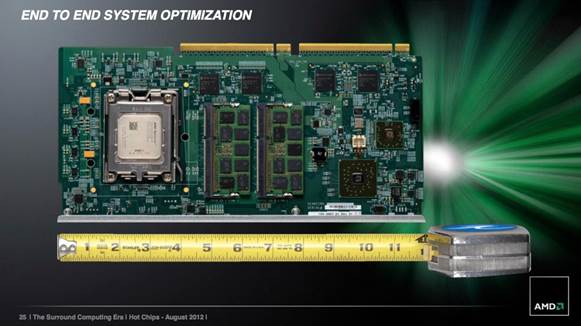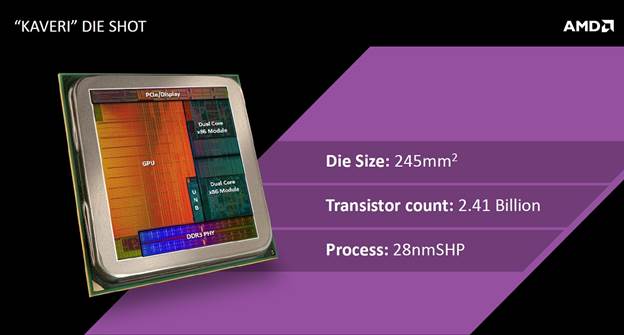APUs like KAVERI are the future for AMD, Reckons Jeremy
Laird, and there are already plenty of compatible motherboards to choose from.
Has AMD
forsaken performance PC processors? That’s a very good question. Interestingly,
AMD’s latest CPU architecture – known as Steamroller – is nowhere to be seen in
its FX line of high performance CPUs.

Steamroller
is a microarchitecture developed by AMD, which succeeded Piledriver in the
beginning of 2014.
Instead,
Steamroller was launched in an APU chip packing both CPU and graphics in a
single die. Of course, all of Intel’s mainstream PC processors are actually
APUs with on-die graphics. The problem is, AMD’s APUs only extended to two CPU
modules or four cores, whereas the FX line goes up to four modules and eight
cores. The upshot of which is that if you want AMD’s most advanced processor
architecture, you can’t have its fastest performing CPU. If that seems odd,
there’s a broader context at play here: a transition the PC is going through.
It’s been happening for several years now and while it has sometimes been a
painful process, it does help explain AMD’s strategy of late.
It’s actually
a pretty complicated transition. There’s the whole CPU-GPU convergence thing.
Then there’s the shift from pure performance to performance- per-watt. And
desktop to mobile. And big-iron boxes to cloud connected thin clients, not to
mention game streaming.
Some of these
issues overlap, but they are all pushing in the same direction, and that’s away
from hefty, standalone CPUs, towards more power-efficient, more highly
integrated, more balanced systems. And guess what? That’s exactly what AMD’s
APUs offer.
The slight
snag with this shift is that the complexities of the APUs have tended to militate
against AMD’s traditional strategy of maintaining maximum backwards socket
compatibility. Its latest APUs require the newish FM2+ socket and nothing else
will do, which means forking out for a new motherboard when you upgrade.

It was
confirmed in the latest roadmap from AMD that the company is
preparing a new FM2+ socket for their upcoming Kaveri APU
However, it
turns out that isn’t necessarily a bad thing. Whereas Intel places a pretty
hefty tax on its motherboard chipsets, AMD platforms tend to be more
accessible. What’s more, the market as a whole has smelled the coffee and AMD
APU platforms are no longer seen as simply the budget option. There are all
kinds of FM2+ boards to suit the full gambit of budgets and usage scenarios.
Nonetheless, the remit for an AMD APU-based rig is a little different from your
traditional desktop tower. Handily, that’s exactly where our round up of FM2+
boards comes in.
When we first
realized that AMD had no immediate plans to stick its new Steamroller CPU
architecture into its FX line of PC processors, it came as a bit of a shock.
Steamroller was surely borked. After all, if it was any good then AMD would put
it into FX chips. Or had the company finally run out of cash and couldn’t
afford to tool up for an FX chip based on Steamroller?
But several
months down the line, we’ve developed a more nuanced view of all things AMD.
This has made a system based on its latest APU – known as Kaveri – and a
motherboard to go with it a much more appealing proposition.

Like their
predecessors, the Kaveri chips bring AMD's CPU and
GPU cores together on a single die, but the architectures have changed.
The only bad
bit that’s proven to be true concerns Steamroller. It is indeed a dud. We don’t
mean that it’s broken or makes matters worse for AMD – even if initial
clockspeeds of Kaveri-based APUs are a little disappointing – but it isn’t the
big step forward that AMD needed in pure CPU-power terms. What we’ve also come
to realise is that there is more to Kaveri than that, and there is a broader
picture of what’s happening to the PC than just CPU performance.